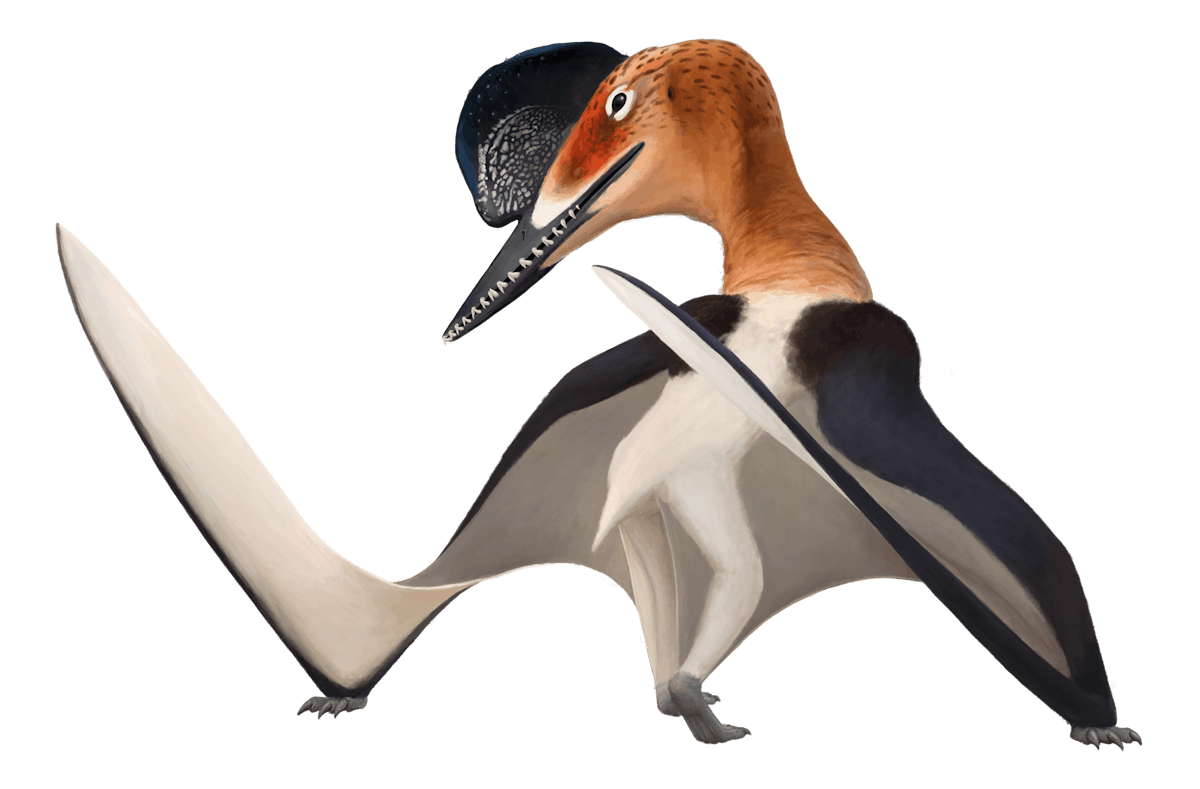Altmuehlopterus



In 1851 Johann Andreas Wagner named a new species of pterosaur, Ornithocephalus ramphastinus, based on a skeleton found in the Upper Jurassic Solnhofen Limestone of Germany. Ornithocephalus is now considered to be a defunct genus, and the species was referred to the genera Diopecephalus or Pterodactylus for much of the 20th century. In 1970, Peter Wellnhofer referred the species to the genus Germanodactylus, along with the type species G. cristatus. In 2017, citing phylogenetic differences between the two species, Steven Vidovic and David Martill gave the species its own genus, Altmuehlopterus.
The genus honors the Altmühl River, flowing near the site of discovery. The species name refers to the toucan genus Ramphastos. In 1859 the spelling was modified to rhamphastinus in an attempt to correct the spelling based on the mistaken assumption that the toucan genus was spelled as Rhamphastos. It is not. Although this spelling change was based on a mistake, it became universal and rhampastinus, with the “h”, is the current accepted spelling.
There are three known specimens, and among them, the anatomy is almost completely known. The skull has a long snout and even though it’s named for a toucan genus, it is actually triangular in profile. The tooth rows of both the upper and lower jaws are straight, and the stout and widely spaced teeth extend to the rostral tips of the jaws. This is unlike Germanodactylus cristatus, where the rostral tips of the jaws are toothless.
The upper surface of the skull bears a low bony crest that runs from the middle portion of the snout to the rear of the skull. In life, the head crest was expanded with soft tissue and was taller and fan-shaped.
Altmuehlopterus was a short-tailed pterodactyloid pterosaur with a wingspan of roughly 1.1 meters (3.5 feet), about the same size as many smaller hawk species.
Many phylogenetic analyses, such as that performed by Nick Longrich and colleagues in 2018, have found Altmuehlopterus as a close relative of Germanodactylus. In turn, they have found the germanodactylids to be early members of the archaeopterodactyloid lineage. Alternatively, in 2004, Maisch and colleagues found Altmuehlopterus to be outside of a lineage containing Germanodactylus and the dsungaripterids.
Vidovic and Martill also found that Altmuehlopterus was more basal than Germanodactylus, but with a significantly different topology than that of Maisch and colleagues. They found that Germanodactylus was just outside a large lineage of orithocheiroids and azhdarchoids, and that Altmuehlopterus was outside that group.
150 million years ago, most of Europe was covered in warm shallow seas, with a few low-lying islands. The islands were dominated by low scrub vegetation, and were ringed by lagoons. Altmuehlopterus was a carnivore, probably hunting for small animals on the beach or the islands.


